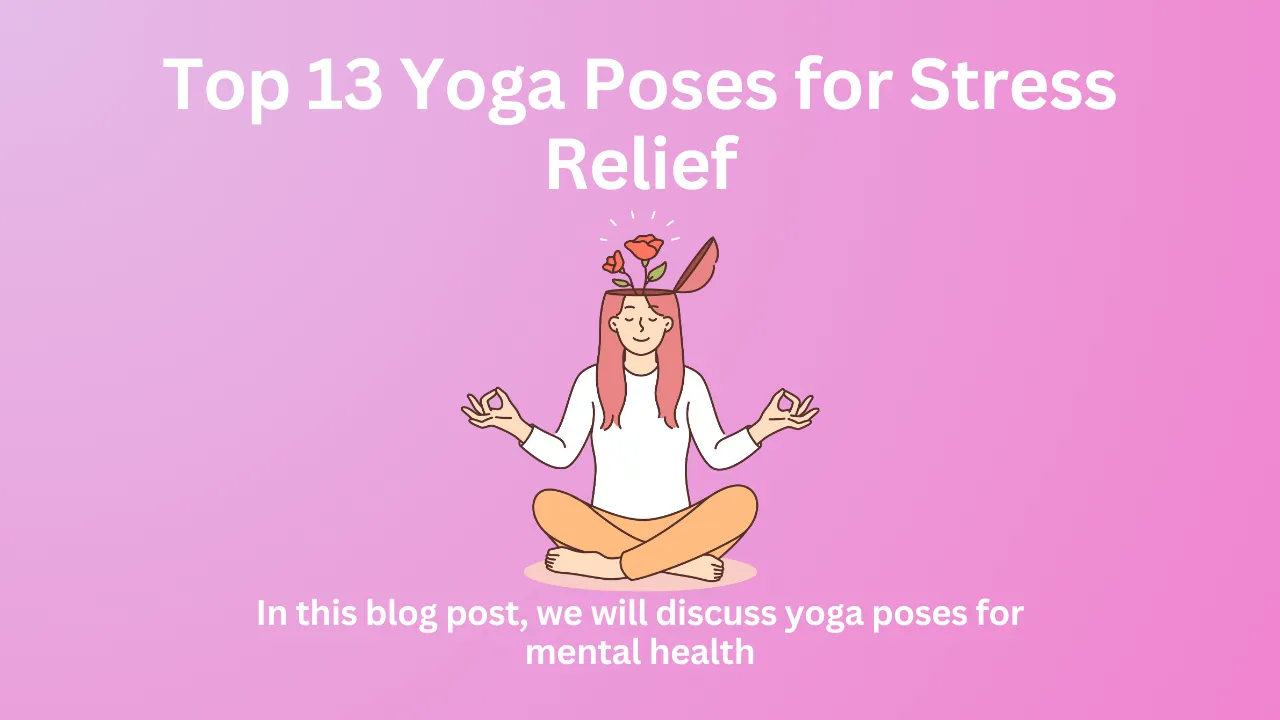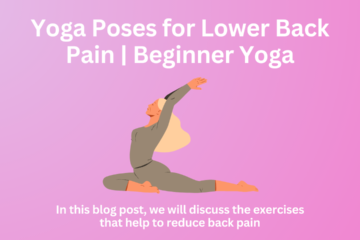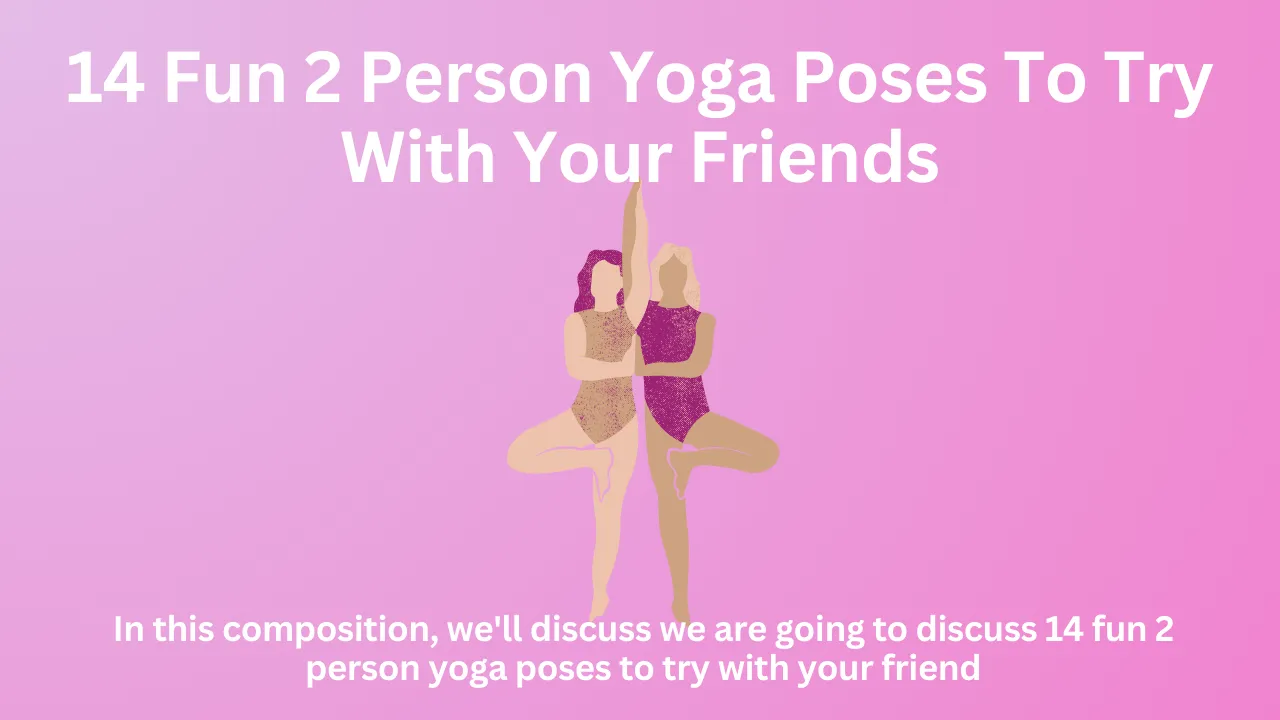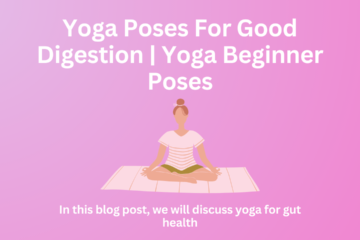Top 13 Yoga Poses for Stress Relief

Are you here seeking yoga poses for stress relief? You’ve come to the perfect place if you’re seeking yoga poses for stress relief. We will cover all the benefits of the most pleasurable yoga poses for weight loss in detail in this blog post. The ancient health and well-being philosophy and practice of yoga address the body, breath, mind, personality, and emotions.
Yoga can lower stress by encouraging awareness and self-compassion through controlled breathing, meditation, visualizations, and physical postures known as asanas. Mental health conditions like anxiety and depression are growing more prevalent. Before using medication, psychologists, psychiatrists, and therapists prescribe preventative and non-medicated yoga therapy for mental health.
Stress-Related Physical Symptoms
- Tensed muscles
- Low-energy
- Mouth dry
- Headaches
- Frequent colds
- Chest pain
- Shaking
- Missing sexual desire
- Teeth grinding, jaw clenching
- Diarrhea, nausea, constipation
Stress-Related Mental Symptoms
- Depression
- Irritation/Mood swings
- Anxiety
- Rushing thoughts
- Lack of focus
- Constant concern
- Forgetfulness
- Loneliness
Yoga is a gentle way to slow down your mind and body via breathing, meditation, and postures. In addition to lowering blood pressure and raising heart rate, breathing capacity, and lung capacity, this also lessens stress.
Yoga releases more endorphins, which are good for your health and relaxation, just like most forms of exercise. Any sort of exercise releases endorphins, which help manage pain and bad emotions.
From beginner-friendly to complicated eagle, yoga positions vary. Each works differently to improve posture, relieve headaches and sleeplessness, and restore the neurological and lymphatic systems.
Yoga’s Mental Health Benefits?
One of the best lifestyle adjustments is to start practicing yoga. Doctors frequently advise physical activity. Meditation and nutritional changes are advised. Two of the aforementioned three activities are combined in yoga.
Yoga has several benefits for mental health, including the following:
- Yoga calms the mind.
Yoga’s advanced postures and breathing techniques soothe the body and mind, which physicians say is one of its key benefits. Panic attacks and anxiety, common mental health disorders, may be prevented with these postures.
- Yoga improves focus.
ADHD sufferers are often advised to practice yoga to calm the body and concentrate the mind. ADHD, which affects concentration and attention, might benefit from breathing and focus postures.
- Yoga improves mood.
Exercise releases brain-healthy endorphins and dopamine. It assists in treating mental health conditions like depression and mood stabilization. For peace of mind, concentration, and mood, therapists recommend yoga. Bipolar disorder mood fluctuations are well managed with this.
- Yoga boosts self-confidence.
Depression and anxiety are often linked to poor self-esteem, but yoga may help. Regular yoga practice centers and improves your body. It improves confidence.
- Increases patience is a yoga mental advantage.
Patients with depression, anxiety, and bipolar disorder sometimes lack tolerance. This may cause rages. Pranayama breathing techniques in yoga help purify the mind and body. These exercises will improve your patience, inner balance, and anger management. You must perform yoga positions that address your mental health issues.
These 13 Yoga Asanas Promote Mental Health
1. Anjaneyasana Pose
This is known as “the high lunge.” Workouts in a crescent shape promote blood flow and calmness.
How to do it?
- Arrange one leg forward aslung.
- Bend your front knee and extend your back leg to align your ankle and knee.
- Press both ankles flat on the ground.
- Raise your arms and make a tight fist.
- Deep breath in, even breath out.
- Repeat 5 repetitions per leg.
2. Garudasana Pose
This is the eagle posture. It reduces anxiety and improves attention.
How to do it?
- Breathe deeply and switch legs.
- Slowly circle one leg around the other.
- Gently bend knees and sink hips.
- Maintain calm, steady breathing by keeping your ankle flat.
- Arms crossed at elbows and wrists.
3. Natarajasana Pose
This asana, “the dancer’s posture,” balances emotion. Unhappy or worried people may benefit.
How to do it?
- Bend one knee back while keeping both legs on the ground and clutching the ankle.
- Stand solid and lean forward, lifting your ankle to the sky.
- Stretch your free hand in front of you.
- Five calm, deep breaths.
4. Virabhadrasana Pose
We’ll cover warrior fundamentals.
How to do it?
- Standing on two feet, spread your legs, bend your hips, and move your ankles to the side you face.
- Bend your front leg 90°.
- Hold your arms at your sides and breathe deeply for 10 seconds.
5. Adho Mukha Vrksasana Pose
- This fundamental handstand is not for beginners.
- Yoga position adho mukha vrksasana.
- Bend forward and put your palms on the ground while keeping your ankles flat.
- Straighten your knees and back.
- Gradually shift weight to your arms.
- Raise one leg over your hips slowly.
- Transfer your weight to the other leg and repeat.
6. Vajrasana Pose
- Meditation in this position improves attention, digestion, and peace.
- Vajrasana yoga instructions
- Sit on your knees and gently lengthen your ankles to join your calves and thighs.
- Next, place your palms on your knees.
- Take a 30-to-minute deep breath.
7. Padmasana Pose
Another, and possibly the hardest, yoga pose is padmasana. This improves digestion, mood, spinal strength, and mental peace. Helps avoid depression and anxiety.
- Instructions for Padmasana in Yoga.
- Sitting cross-legged, lift one ankle over the other.
- Try to get it close to the hip, then try the other ankle.
- Maintain a straight back and place your hands on your knees.
- Breathe evenly for 30 seconds.
8. Chakrasana Pose
The circle posture, or asana, is difficult yet enhances attention and tranquility.
How to do it?
- Stand up and raise your arms.
- Bend backward with a straight back.
- Continue gently until your palms touch the ground behind you.
- Keep your ankles down.
9. Savasana Pose
Yoga often concludes with the Corpse Pose (Savasana). Class is usually the calmest throughout it. This position grounds the body, relaxes it, and encourages relaxation. Blood circulation and insomnia are both improved by corpse pose.
How to do it?
- Lay flat on your back with your legs spread but not wider than your mat. Keep your arms at your sides, palms up.
- Breathe deeply, relax your face, and close your eyes.
- Focus on each portion of your body, from head to toe, then release it.
- Hold this stance for three to five minutes.
10. Bridge Pose
Bridge Pose (Setu Bandha Sarvangasana) is a gentle inversion with the heart above the head. It relaxes the brain and CNS, and reduces stress, anxiety, and moderate depression. It reduces high blood pressure, backaches, lethargy, sleeplessness, and headaches. It stimulates the thyroid, lungs, and abdomen.
How to do it?
- Lay down on your back. Kneel and arrange feet hip-width apart. Keep your arms beside your body, palms down.
- Press your feet down. Inhale deeply and raise your hips. Keep your knees hip-width apart.
- Push your arms and shoulders to elevate your chest. Lift your hips with legs and glutes.
- Roll your spine softly to the floor after five breaths.
11. Extended Triangle Pose
Extended Triangle Pose is the ultimate full-body stretch for tension and anxiety relief. The standing asana in contemporary yoga contains modifications like Baddha Trikonasana and Parirtta Trikonasana. Extended Triangle Pose stretches knees, thighs, and ankles. Extended Triangle Pose aids digestion, sciatica, and osteoporosis.
How to do it?
- Stand erect, exhale, and spread legs one meter apart.
- Palms facing down, stretch arms sideways.
- Extend your right foot 90 degrees.
- Flex your right thigh and turn it out.
- Bend from hips to right leg.
- Left-turn your body.
- Lengthen your tailbone toward your heel and slightly forward your left hip.
- Your right hand should be on your ankle, shin, or floor, depending on flexibility. Stretch your left arm above.
- Hold for 30 seconds with a straight head.
- If you can’t reach the floor, lay your hand on your leg above or below your knee or a yoga block.
12. Cat Pose
Marjaryasana, or Cat Pose, is an asana that promotes stress relief, spinal flexibility, mobility, and emotional equilibrium. Asana flow (breathing during each position) relieves stress from period cramps, lower back pain, and sciatica. It stimulates and massages the kidneys and adrenal glands in the abdomen.
How to do it?
- Starting on your hands and knees, exhale and bring your stomach into your spine.
- Back to the ceiling as much as possible.
- Your crown should face the floor. Avoid forcing your chin on your chest.
- Ten times.
- Relax your shoulders.
- Drop your head naturally, not forcefully.
- Straight arms help the Cat Pose shift your spine.
13. Legs-up-the-wall Pose (Viparita Karani)
The Legs-up-the-Wall Pose (Viparita Karani) is a fully supported asana normally done against a wall. Legs up against a wall alleviate tension and are a fantastic pre-bedtime position to soothe the mind and heart. Legs-up-the-wall stretches the back, neck, and chest. Legs-up-the-wall asana improves lymph drainage, blood circulation, and heart return.
How to do it?
- Legs-up-the-wall Pose
- Start with your hips against a wall, then roll onto your back with your legs straight.
- Press your bottom against the wall as closely as possible. Wiggling may get you near.
- Hold this stance for 5 minutes.



0 Comments